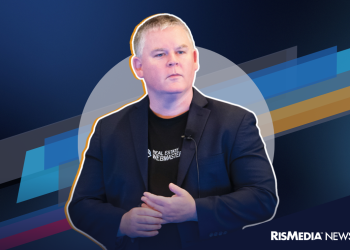The Federal Reserve is queuing up to make more aggressive moves in the coming years, a departure from the easing-in strategy it implemented amid the pandemic to incentivize economic recovery.
While Fed officials voted to hold rates near zero on Wed., Dec. 15, the latest projections are an about face from September’s outlook, when several officials said we likely wouldn’t see rate increases until 2024.
With inflation levels continuing to rise, however, the Fed is taking bold actions to curb the growth rate.
Key changes:
- The Fed will be accelerating the reduction of monthly bond purchases, doubling its current pace and winding down the stimulus program initiated amid the pandemic.
- Additionally, the Fed will likely raise rates in late winter or early spring, projecting three rate hikes for 2022, two for 2023 and two for 2024.
The takeaway:
According to the Fed, supply and demand imbalances due to the pandemic, and the reopening of the economy “have continued to contribute to elevated levels of inflation,” prompting concerns.
However, Fed Chairman Jerome Powell also noted that economic activity is poised to expand “at a robust pace this year” due to vaccination progress and the reopening of the economy.
The Federal Reserve will be keeping a close watch as COVID spikes emerge across the country, considering adjustments as necessary depending on the economic outlook.
“Economic developments and changes in the outlook warrant this evolution of monetary policy, which will continue to provide appropriate support for the economy,” said Powell in a statement.
Powell said the committee continues to expect inflation to decline closer to their 2% goal by the end of next year.
Core inflation was up 4% year-over-year last month, double what the Federal Reserve set as a target, even hitting 5.4% in September. But the real estate industry isn’t worried.
In its recent forecast, the National Association of REALTORS® predicted inflation would rise 4% next year, decelerating after posting significant increases in 2021, with home price growth slowing down as well.
While Fed movements do not directly impact mortgages, they do regularly influence rates, and so the industry can expect mortgage interest rates to rise in the coming years.
Mortgage rates have continued to fluctuate in recent months, with the latest data from Freddie Mac putting them at 3.10% on average for a 30-year, fixed-rate mortgage. Industry experts expect rates to reach 4% by end of next year.
The Fed is looking at the labor market as it plans for the future of rates. During Wednesday’s meeting, Powell was asked to elaborate further on what maximum employment would have to look like for the projected increases to commence.
According to Powell the threshold will rely on a “broad group of indicators,” including the unemployment rate, labor force participation rate, wages, flows in and out of the labor force, and more.
“It is admittedly a judgment call because it’s a range of factors, unlike inflation where we have one number that dominates,” Powell said. “In my view, we are making rapid progress toward maximum employment, and you see that in some of the factors.”
What the industry is saying:
“Inflation is running well above target, and the job market is booming. That is why it was no surprise that the Federal Reserve moved to accelerate their taper of Treasury and MBS purchases and signaled that the first rate hike will be coming sooner rather than later. Moreover, the median FOMC member now expects three rate hikes in 2022.
“The Fed’s outlook for economic growth in 2022 has improved, while their forecast for inflation has worsened. While market participants likely anticipated this change to their asset purchases, the more hawkish view with respect to rate hikes may well have surprised the market.
“Mortgage rates have been kept lower than they otherwise would have been through the Fed’s purchases of longer-term Treasuries and MBS. Going forward, MBA forecasts that mortgage rates will rise to 4% by the end of 2022 and may be more volatile as the Fed backs away from the market. Although this will lead to a drop in refinances, we expect that the strong economy will support an increase in home sales in 2022.” — Mike Fratantoni, SVP and Chief Economist, Mortgage Bankers Association
“We have been anticipating an upward trajectory for mortgage rates in 2022 for some time now as a result of the Federal Reserve tapering asset purchases as well as the general recovery of the economy.
“The Federal Reserve moving up its timeline regarding tapering is likely to move up the timing of that trend but probably doesn’t change where rates are likely to land in 2022 much. The more important factor for mortgage rates over the medium term is likely keeping inflation expectations anchored.
“So far, most indications show that medium and long-term inflation expectations are well anchored, which should exclude price level-driven movements in mortgage rates. We see mortgage rates as slowly rising through 2022, likely averaging around 3.5%.” — Ruben Gonzalez, Chief Economist, Keller Williams
Jordan Grice contributed to this report.
 Liz Dominguez is RISMedia’s senior online editor. Email her your real estate news ideas to lizd@rismedia.com.
Liz Dominguez is RISMedia’s senior online editor. Email her your real estate news ideas to lizd@rismedia.com.











